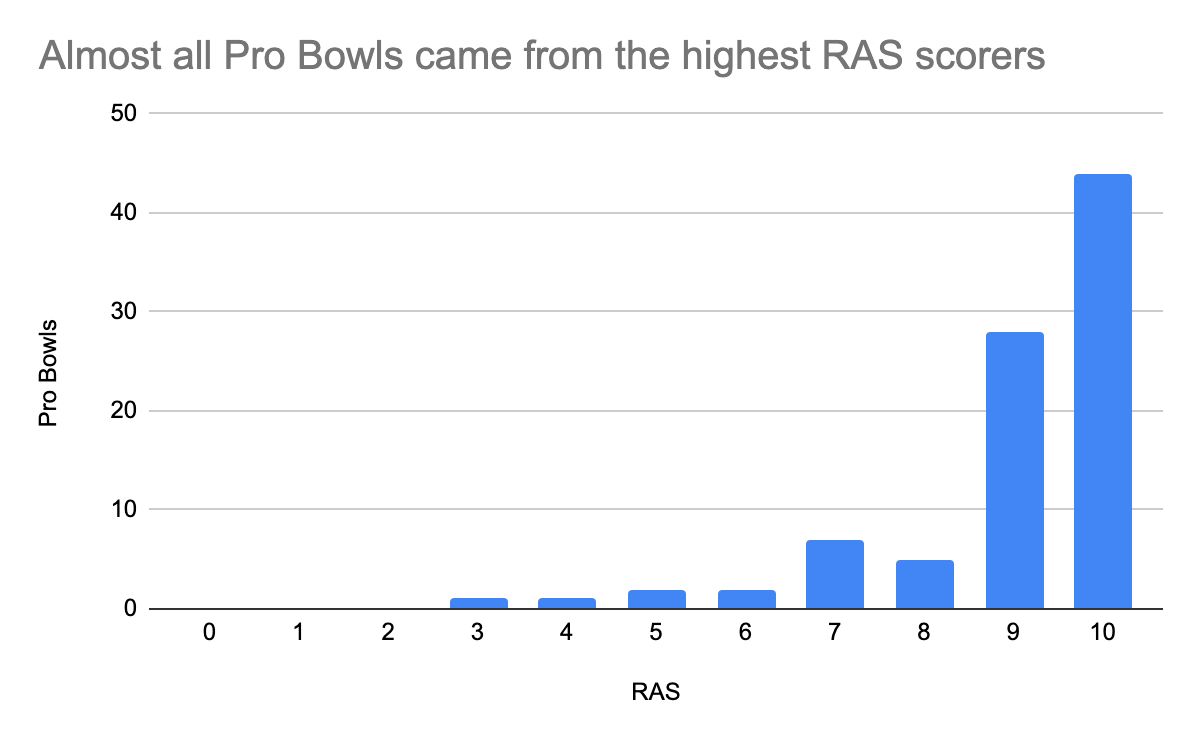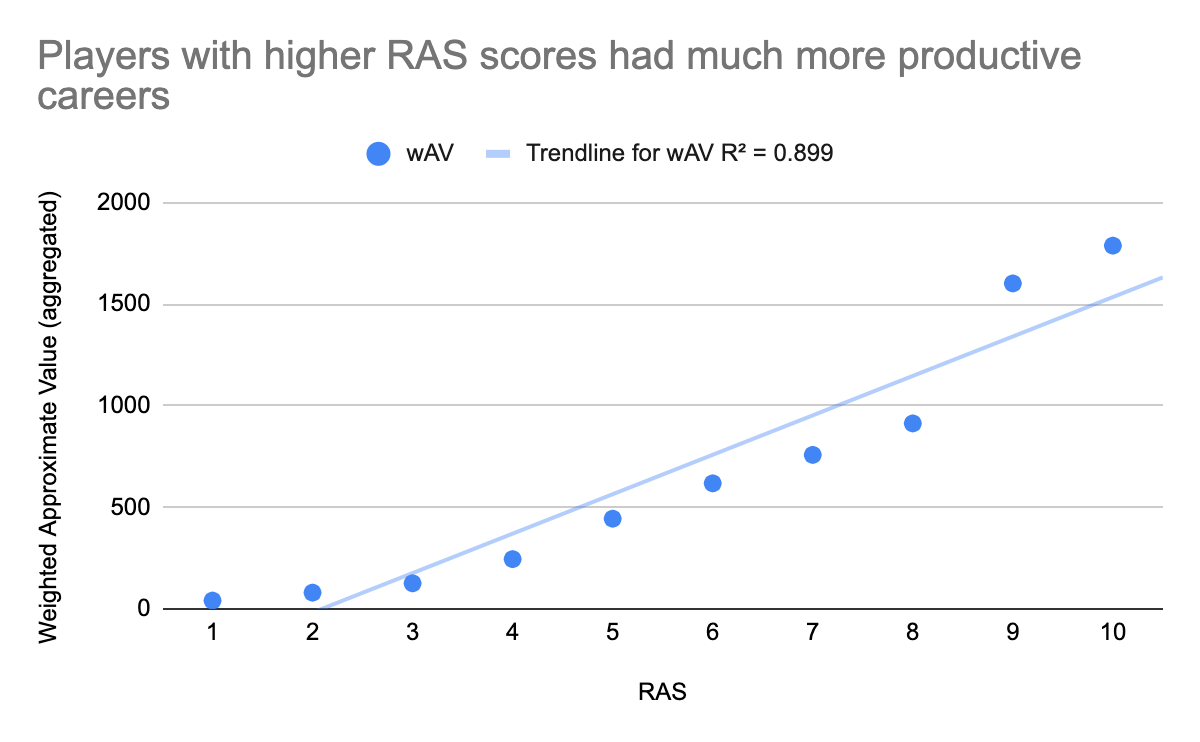How Important are NFL Combine Performances?
By Kian Naini | November 19, 2023

In the NFL combine, prospects perform live on-field drills, athletic testing, and conduct interviews with executives and evaluators from all 32 NFL teams. After the combine, the teams take the information gained from the combine along with players’ college career resumes and select players to add to their team in the annual NFL draft. All of the aforementioned aspects of the combine factor into teams’ evaluations, but the ones that catch the most eyes in the public are the athletic numbers. There is a constant debate on how these athletic numbers should factor into evaluations. Some believe it’s just “guys running around in shorts” that doesn’t show anything about their skill, whereas others believe it’s important to gauge a player's athleticism relative to their peers. One player that particularly stuck out to me was Travon Walker, the Jaguars’ first overall pick in the 2022 NFL Draft. Until the combine, Walker was frequently mocked in the mid-to-late first round, with an occasional appearance in the top ten. At the combine, he ran a 4.51 40-yard dash, the fastest ever for a player weighing at least 270 pounds, and the rest of his measurements were all 85th percentile or higher for his position as well. Many fans seemed to believe that Walker’s meteoric rise to #1 after the combine was unwarranted, suggesting it was based on his workout ability and not his football skill. By my estimation, Walker has had a very mediocre career so far, but there is a lot of time for him to write his story. This begs the question: How much should the athletic testing in the combine factor into draft evaluations?
Methodology
To measure combine performance, I will be using the Relative Athletic Score (RAS) devised by Kent Lee Platte to assess combine performance. RAS is a metric that essentially boils down combine performance into a single number that can be compared across years. It compares a player’s performance to every player at that position who participated in the official combine or did similar drills at an official collegiate pro day since 1987. A score of 10 means the best performance at that position ever, whereas a score of 0 means the worst performance at that position ever. This score is calculated by averaging out percentiles for performances in ten different drills as compared to their position group historically. A breakdown of the formula as well as an example of an individual player’s RAS is below:


Drafting
First, it is important to examine how the combine is used by NFL GMs and scouting departments today. Do they pay significant attention to how these guys look in shorts, or is it just another minor datapoint informing their ranking of these players? To examine this, I wanted to look at the relationship between RAS score and draft position.

On average, players with a higher RAS score were drafted earlier. However, a one-point increase in RAS score was worth approximately nine draft picks, which is not a major difference in the grand scheme of a draft almost 300 picks long. Because this chart only analyzed those players that were drafted and not the hundreds that go undrafted every year, I next sought to study if there was any correlation between RAS and probability of drafting.

It appears that a requisite level of athleticism may be a minimum requirement to get drafted. Almost all drafted players had an above-average RAS score, which makes sense because RAS is compared to all players in historical draft classes, not just those that are drafted. This suggests that GMs may be using it as more of a disqualification metric rather than a ranking metric among the players they are interested in actually drafting. It seems likely that many teams have a minimal threshold for athleticism that if not met, the team simply will not draft regardless of other factors that may contribute in the player’s favor.
NFL Success
The draft is a projection exercise. Players get drafted based on what a team believes they can produce in the NFL, rather than how they have produced in their previous college and high school stops. Thus, it is essential to evaluate not just how the GMs are using these RAS scores, but also if there is any merit to using them based on NFL career outcomes. To test this using both a quantitative and qualitative metric, I evaluated RAS against Pro Bowls, a media-voted metric honoring the best players every season, and wAV, a metric developed by Pro Football Reference that quantifies how much value a player added to their team during their career based on their play and their position.

Athleticism and combine performance are often talked about in the “ceiling” context of evaluating how a player will translate to the NFL, suggesting that players with rarer athletic traits have a better chance of being an elite player but maybe still the same chance of just being a contributor. The data backs that up, as almost all players that made a Pro Bowl scored in the top 10% of RAS. Athleticism may just be an accurate metric for projecting upside.

In addition to upside, this suggests that players with higher RAS scorers may actually have a higher floor for NFL success as well. Logically, this makes sense as well. If a player’s skills don’t translate to the NFL, at the very least they can fall back on elite athleticism if they have it.
Conclusion
Overall, while seemingly not playing a major role in draft slot, RAS and by extension overall athleticism does seem to impact whether a player gets drafted or not. I would argue that it should have more of an impact on draft slot, as it has clearly had a major impact on success in the NFL and the entire name of drafting is selecting the players who will be the most successful and improve your team the most.

